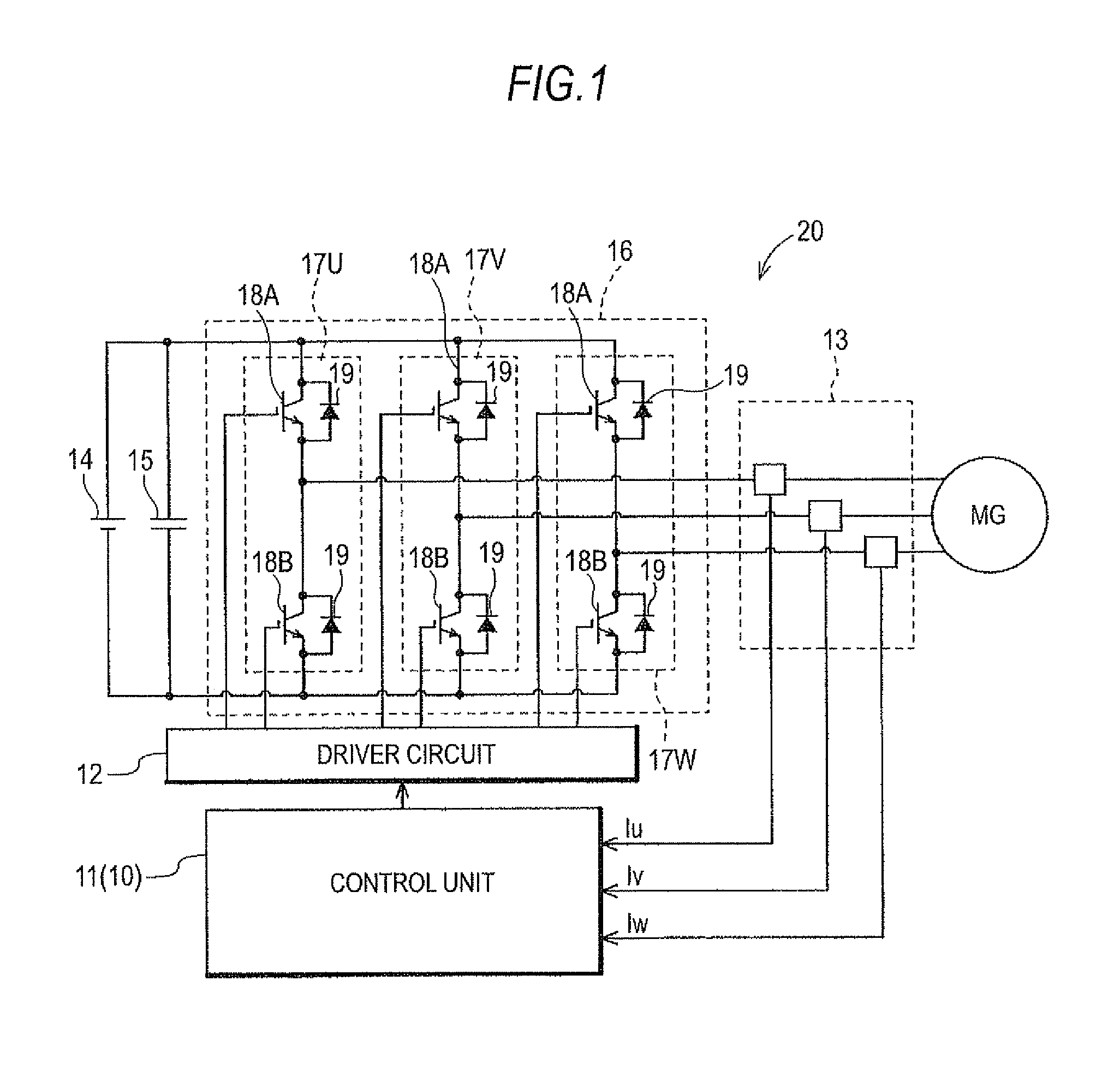Motor control device
a technology of motor control and control device, which is applied in the direction of motor/generator/converter stopper, electronic commutator, dynamo-electric converter control, etc., can solve the problems of impaired stability of identifying the polarity of the magnetic pole, unstable d-axis voltage, etc., and achieve stably identification, easy control, and easy identification
- Summary
- Abstract
- Description
- Claims
- Application Information
AI Technical Summary
Benefits of technology
Problems solved by technology
Method used
Image
Examples
Embodiment Construction
[0024]Referring to the drawings, an embodiment of the present invention will be described below. A motor control device 10 of the present invention is a motor control device that has a function of detecting a magnetic-pole position of an alternating current (AC) motor MG (hereinafter, simply, a motor) without using a rotation sensor such as a resolver, that is, in a so-called sensor-less manner. In the present embodiment, the motor MG is an interior permanent magnet synchronous motor (IPMSM), and has saliency (including reverse saliency) signifying that the magnetic characteristic in an N-pole direction of a permanent magnet of a rotor is electrically different from the magnetic characteristic in a direction perpendicular to the N-pole direction (a direction deviated by an electrical angle of 90°). In the present embodiment, the motor control device utilizes the saliency to identify a magnetic-pole position or the direction of a magnetic pole in a sensor-less manner even when the mo...
PUM
 Login to View More
Login to View More Abstract
Description
Claims
Application Information
 Login to View More
Login to View More - R&D
- Intellectual Property
- Life Sciences
- Materials
- Tech Scout
- Unparalleled Data Quality
- Higher Quality Content
- 60% Fewer Hallucinations
Browse by: Latest US Patents, China's latest patents, Technical Efficacy Thesaurus, Application Domain, Technology Topic, Popular Technical Reports.
© 2025 PatSnap. All rights reserved.Legal|Privacy policy|Modern Slavery Act Transparency Statement|Sitemap|About US| Contact US: help@patsnap.com



